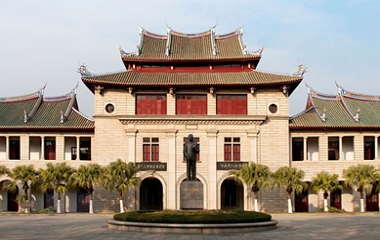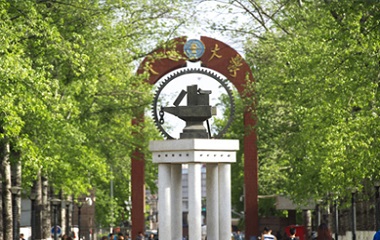[Japan] Sugiyama Saki, Zhejiang University
It’s safe to say that “I encountered China through ‘eating.’” It was in September 2017 when I’d traveled in China. Landed in Shanghai, I visited the cities of Tongxiang, Zhengzhou, Beijing and Shenyang during my 24-days trip when I tasted various delicious Chinese foods, such as fried dumplings, Beijing roast duck, stewed noodles, mutton shashlik, spicy hot pot, Kung Pao chicken.
My mouth began to water just as I saw the photos on the menu. The dishes that came up smelled as good as they looked and I was completely marveled by the Chinese food. By the time of departure, I seemed to have put on a few pounds in weight. Nevertheless, I got a stronger desire of “tasting foods around China.” This is my “delicious” encounter with China.

Three years later in 2020, I was accepted by the Zhejiang University as a postgraduate student. I have moved from the stage of “eating” Chinese food to the stage of “thinking” about Chinese food. Once I took a lesson on Chinese food, and the teacher introduced the features of Chinese cuisines from different aspects. I was most impressed by two of them: First, the “five features of national dishes,” namely color, aroma, flavor, meaning and form, have been the focus of Chinese cuisine since ancient times. Many miraculous dishes have been created thanks to the myriad of combinations of ingredients, duration and degree of cooking and cutting skill. Second, Chinese cuisine was a cultural symbol that is closely connected with Chinese history. For example, some Chinese dishes were related with traditional Chinese festivals and culture: Chinese would have sweet dumplings (or Tangyuan) on Lantern Festival to express the wish of “family union.” On Dragon Boat Festival, Chinese people would have rice dumpling (or Zongzi) to memorize the patriotic poet Qu Yuan. On Mid-Autumn Festival, Chinese would eat moon cakes, which were used by the antient Chinese to worship the Goddess of Moon. Besides, a common Chinese health term of Shanghuo (excessive inner heat), which a foreigner could hardly understand, is a concept of the traditional Chinese medicine and embodied the traditional Chinese philosophy of Yin-Yang and the Five Elements.

In this way, I’ve re-discovered the Chinese cuisine with my personal experiences and the knowledge I learned during my study. To me, China is no doubt a great country with incredible foods, not only because of the delicious Chinese dishes, but also due to the broad and profound Chinese culture connected with the foods. Moreover, with a vast territory, extensive food materials obtained from fertile soils produce colorful local foods in different places. It’s impossible to define the kaleidoscopic Chinese foods. Due to the pandemic I couldn’t come to China these days, I really hope to be there immediately for a big nice meal.
“Eating” is a good start to understand China and you would learn Chinese culture through “eating.” Extensive background and long history of Chinese food culture are treasures that attract many foreigners like me. I sincerely hope the Chinese food would be spread around the world, and becomes a communication bridge of different cultures. Therefore I’d like to announce loudly here: “To learn about China, start from eating Chinese food!”
The story is from "My Beautiful Encounter with China" Essay Competition organized by the Chinese Service Center for Scholarly Exchanges (CSCSE).










